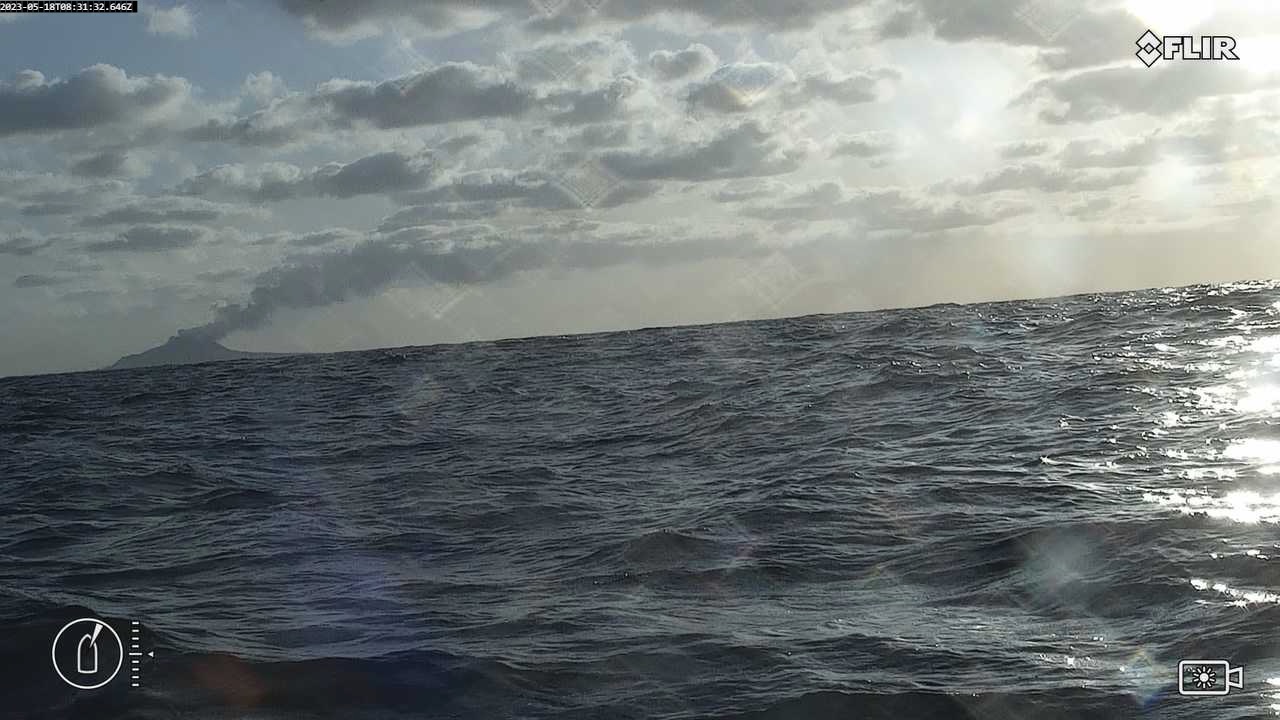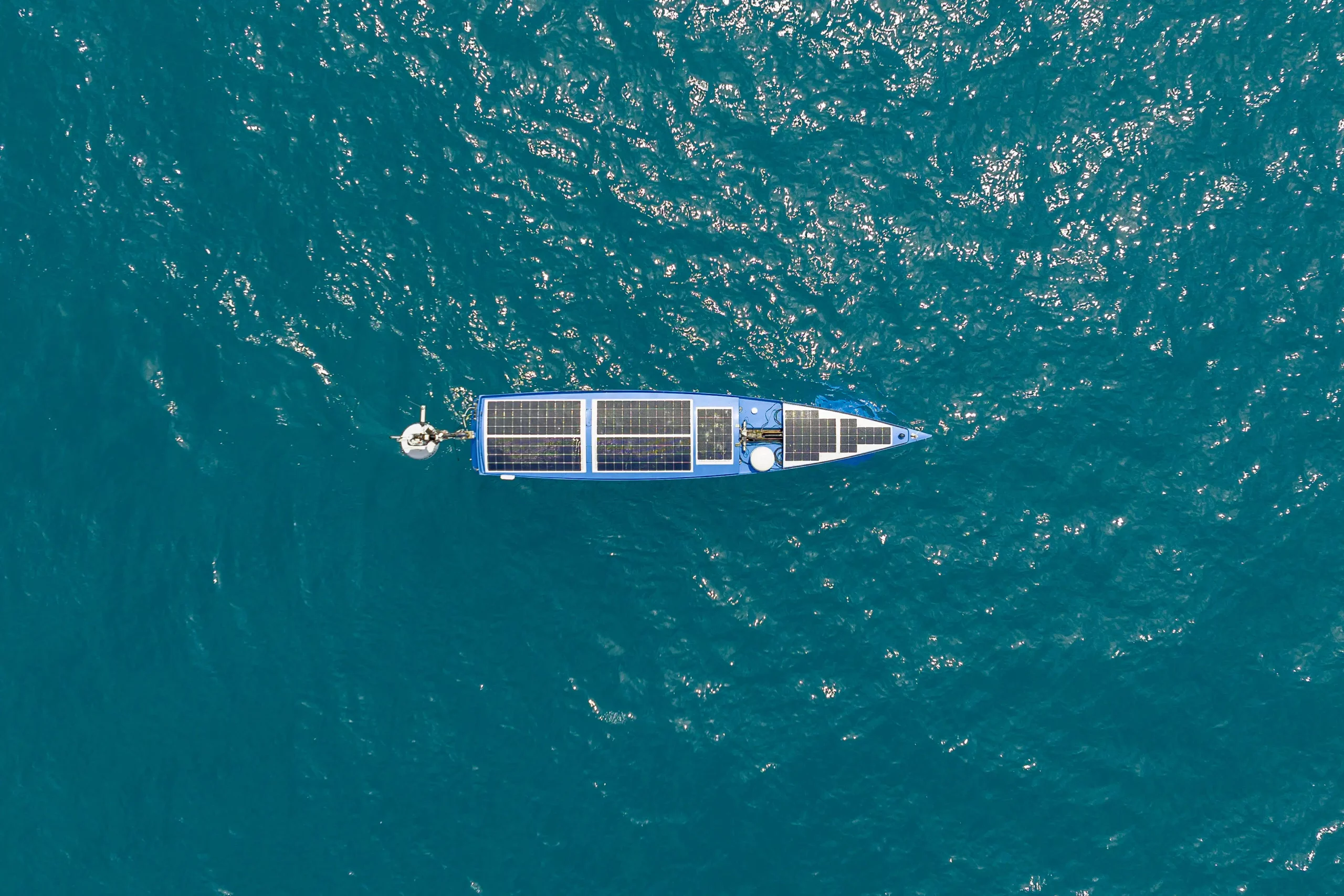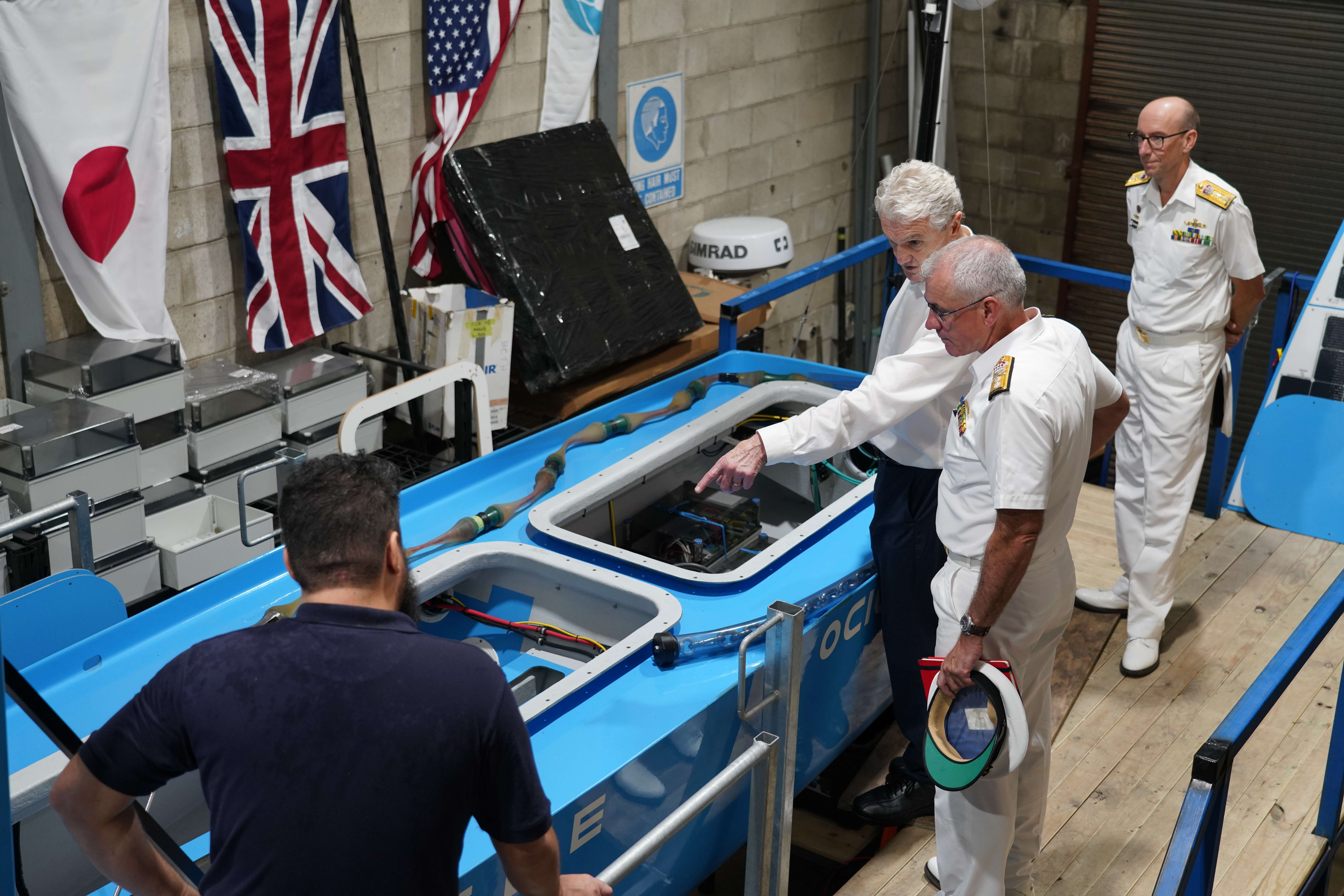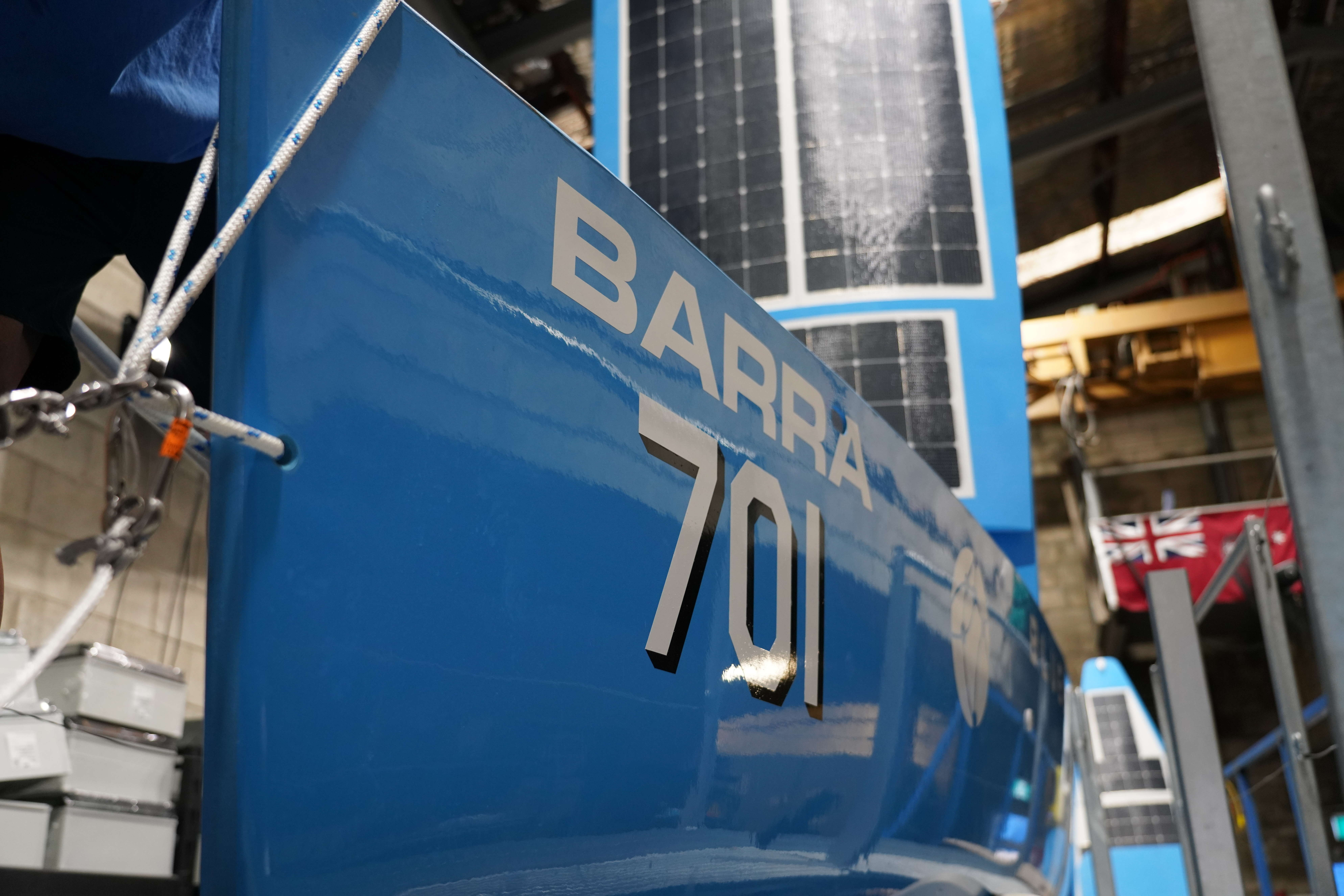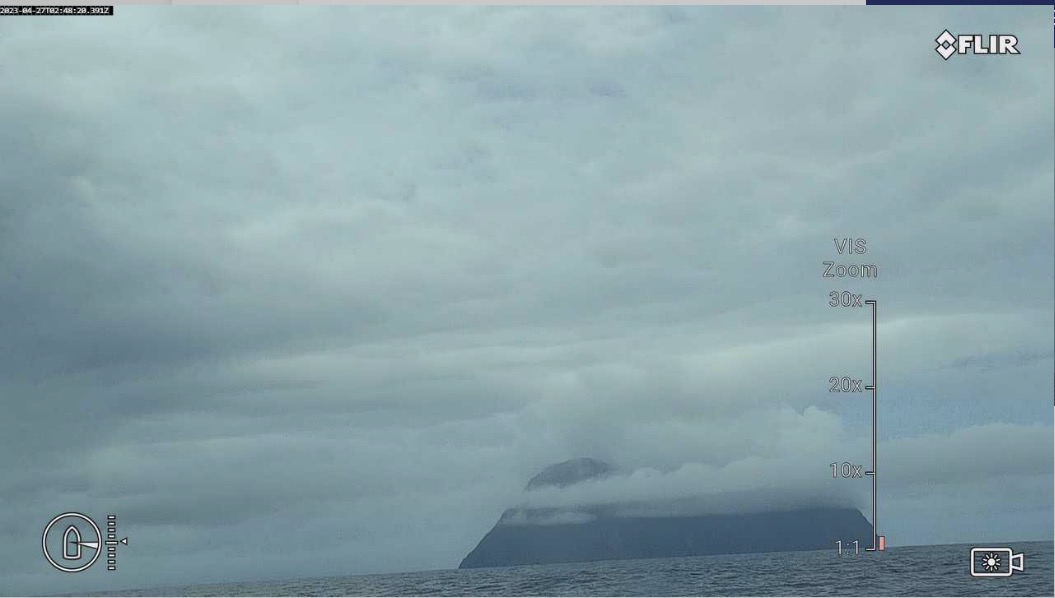By Robbin Laird
In my discussion with Commodore Darron Kavanagh, Director General Warfare Innovation, Royal Australian Navy Headquarters, he emphasized that one way to look at the contribution of maritime autonomous systems was in terms of the mission threads to which they contribute.
As CDRE Kavanagh underscored: “One of the issues about how we’ve been looking at these systems is that we think in terms of using traditional approaches of capability realization with them. We are not creating a defense capability from scratch. These things exist, already, to a degree out in the commercial world, regardless of what defense does. AI built into robotic and autonomous systems are in the real world regardless of what the defence entities think or do.
“And we have shown through various autonomous warrior exercises, that we can already make important contributions to mission threads which combat commanders need to build out now and even more so going forward.”
And that is clearly a good way to understand the contribution already being made by the Bluebottle USV designed, developed, and built by Ocius. During my trip to Australia last September, I had my first discussion with Robert Dane, the founder and CEO of Ocius who introduced me to the product and in my recent trip I received an update from him April 6 and then visited the Ocius facility in Sydney on April 21.
During the April 6 discussion, I received an update on the product and will discuss that update in the terms suggested by Commodore Kavanagh in this article. I will discuss the visit to the Ocius facility in a future article.
The Bluebottle USV is a USV which provides persistence surveillance. As one source describes it: “The Bluebottle USV harvests solar, wind and wave energy to remain at sea for months at a time, making a forward speed of up to 5kt. It remains in touch with a shore station using on-board communications systems and deploys a range of above water and underwater sensors to detect and track targets, including underwater objects, sea mines, surface vessels and other USVs.”
On their webpage, the company identifies four basic attributes of the USV in its description of the platform. It has a folding solar sail, a unique rudder flipper, various payloads of sensors with an integrated and networked communication system, and a patented keel winch cassette.
Each attribute is described as follows:
“Solar Sail: When deployed, the patented hard solar sail harnesses both solar and wind energy. When not desired it automatically folds snuggly into the deck of the Bluebottle like the wing of a bird, so it’s 100% retracted but also not taking up precious payload space within the vessel. Intelligent programming means the solar sail reacts autonomously to the sea, sun & wind conditions to ensure efficient and safe operation for all mission requirements.
“Rudder Flipper: The patented rudder-flipper steers, guides and powers the unmanned vessel generating forward thrust from the pitching of the vessel in the waves of the ocean. The bigger the sea state the stronger the forces. In Seastates over Seastate 6 the solarsail automatically lowers and the rudder passively propels the vessel in the desired direction. If left in the mid position it passively turns the bow of the Bluebottle into the oncoming seas giving Bluebottles unprecedented seakeeping and survival capabilities requiring zero energy.
“Sensors and Communication: Multiple sensors are available as options underwater, inside the hull and on the aft comms mast. An Integrated and networked communication system allows live tracking. All vessels can be monitored while operating autonomously or controlled remotely, constantly sending data back to the control room.
“Keel Winch Cassette: The patented ‘reel in the keel’ winch is a cassette that displaces water ballast in the keel – so adding or changing a cassette does not interfere with the displacement or trim of the Bluebottle. The cassette can be flat packed and shipped to anywhere in the world for customers to install, commission and test their sensor or array on the winch before inserting it into the payload bay of a Bluebottle – being ready to go.”
In my April 2023 update, Dane provided an overview of ways the Bluebottle had been used by the Australian government in the past few months. We discussed three mission threads which Bluebottles have been used for in the past few months: support for the Army in amphibious operations; support for the government in fisheries protection; and in support of the Navy in shaping autonomous systems con-ops in the underwater warfare area.
The first was done in October 2022. The event and the role of the Bluebottle was described in a 22 November 2022 press release by the Australian Ministry of Defence as follows:
The seventh rotation of Army’s Regional Force Surveillance Group (RFSG) used Bluebottle USVs, developed by Ocius Technologies, which can provide a 24/7 on-water surveillance capability, with the flexibility to be readily maneuvered to respond to emerging surveillance requirements or tasks.
During the two-week deployment in October, the contingent conducted surveillance and reconnaissance on and around remote islands off north Western Australia for foreign fishing vessels and evidence of illegal activities. The contingent of 18 personnel was drawn primarily from Northwest Mobile Force (NORFORCE) and 10th Force Support Battalion, with attachments from the 3rd Battalion, the Royal Australian Regiment and 1st Combat Signal Regiment.
Major Alexander Brent, the Maritime Border Command (MBC) Liaison Officer to Rotation 7, said the use of the Bluebottles, and the embedding of an Ocius employee within the task unit headquarters, added significant capability to the operation.
The trial by NORFORCE will likely inform future teaming with unmanned maritime assets to support amphibious and littoral combat manoeuvres. As one of three Regional Force Surveillance Units which form the 2nd Division’s RFSG, NORFORCE provides a persistent screen in northern Australia, living by the motto ‘Ever Vigilant’.
Several times a year the RFSG screen is supported by enabling assets, including medical teams, remote command-and-control nodes and Australian Border Force (ABF) assets to enhance the effectiveness of the screen as part of Operation Resolute.
NORFORCE Patrol Master, Captain Stephen Sewell, said the efforts increased situational awareness of illegal activities in the region. “The soldiers conducted surveillance from observation posts, dismounted patrols across the islands and patrols in the littoral environment by watercraft,” CAPT Sewell said.
The contingent conducted surveillance and reconnaissance of about 5500 square kilometres.
Major Brent said inter-agency cooperation was vital for the continued success of operations like Resolute.
“There is a very close relationship between the ADF and ABF, facilitated through MBC, which enables shared effort and the sharing of information to achieve better operational outcomes and security for Australia,” Major Brent said.
“At the local level, the Regional Force Surveillance Units have an intimate relationship with the Indigenous communities and leaders in their respective areas of operation, which is vital to the enhanced understanding of country, patterns of life and access across the north of Australia, all of which directly contributes to the land component outcomes for Op Resolute.
“When you add contractors, local councils, local land councils and private industry, who all have vested interests in northern Australia, the level of inter-agency cooperation required to ensure successful Op Resolute outcomes is immense.”
As Dane commented about working with the Army in this effort: “We provided over the horizon ISR and what I call the ‘google street view’ of the areas where they would operate. They could see a beach on a satellite but the satellites cannot provide the views which we can provide an amphibious force.
“We deployed from Broome 350 NM away about a week before the operation, arrived before the operation started, operated for 10 days in the exercise in an archipelago with strong currents, under control from Darwin and then sailed home, with each of the two boats covering around 1900 nautical miles.”
The second was done in January and February 2023. Here the Bluebottles were tasked with providing surveillance of fishing areas to assist the government in monitoring activity to help prohibit illegal fishing activities.
A 31 January 2023 Australian government press release described this effort as follows:
Uncrewed marine vessels known as “Bluebottles” have taken to the waters of Two Rocks and Jurien Marine Parks to stop illegal fishing in Australian Marine Parks.
Minister Plibersek has announced that Parks Australia is testing the efficacy of two uncrewed surface vessels during a 30-day trial through January and February to capture 24/7 real-time imagery of activity in the two marine parks off the Western Australian coast.
The trial will test technology to see if can be used into the future to monitor and prevent illegal fishing.
The 22ft solar, wind and wave-powered Bluebottles were developed by Australian company Ocius and launched from the Ocean Reef Boat Harbour in Western Australia. The vessels, which look similar to a small yacht, are equipped with 360-degree day/night infrared cameras, radar and satellite communications. They can autonomously monitor designated areas for months at a time.
The innovative Bluebottle technology will allow Parks Australia to monitor marine vessel activity across these two important marine parks that have previously been difficult and costly to patrol.
These new surveillance measures help to protect the plants and animal species in the marine parks including Western Rock Lobsters.
The annual migration of the Western rock lobster from the coast to deeper waters is known as the ‘whites run’ and attracts thousands of licensed cray fishers who target this prized species. To make sure the species survives, some areas in Marine Parks are designated “no take zones”.
Stopping illegal fishing protects the species and protects legal fishers who do the right thing, and who rely on lobsters for their livelihood.
The Bluebottle boats aren’t the first use of new technology to monitor Western Australia’s marine parks.
During last year’s Western Rock Lobster migration event, two underwater recorders called sound traps were installed at Two Rocks Marine Park to provide information on vessel activity in the park.
Drones with high resolution cameras are also being tested in no fishing zones of Australian Marine Parks to monitor marine vessel activity from the air.
Australian Marine Parks are special places and monitoring compliance breaches is essential to protect and conserve our rich marine life and biodiversity in these areas.
At Two Rocks Marine Park in the last financial year there have been 15 illegal recreational fishing incidents detected. The Government issued penalty infringement notices of $687 per incident as well as issuing official warnings.
Minister for the Environment and Water, the Hon Tanya Plibersek MP said:
“Marine National Parks are such special places. We need to protect the animals and plants that live there so future generations can see them in the wild.
“No-take zones are vital to protect threatened species, and also mean that surrounding areas see increases in fish stocks.
“Whilst most fishers do the right thing and stay in legal fishing zones, we aren’t afraid to crack down on those doing the wrong thing by fishing in the ‘no take’ areas. Fishing is not allowed in the National Park Zones of Australian Marine Parks.
“The new Bluebottle vessel technology will enable large marine areas to be monitored over longer periods of time.
“We’re testing the Bluebottles as a cost-effective addition to the current monitoring and surveillance tools we’re using. They join drones and sound traps as the latest technology we’re testing.”
Dane indicated that the effort has had the desired effect. “We sent two boats on a 30-day mission whereby we split time between two maritime sanctuaries. We obtained 19 identifications of the number and name of boats violating the sanctuary and each of these people received notice from the government. The result was immediate. After the notification, the word was out and the next weekend there were no violations.”
The third was completed recently at Autonomous Warrior 2023. In my meeting with Kavanagh, the Commodore indicated that this AW was different from the last. At the last AW, contractors were showing their wares and Kavanagh’s team was getting a chance to see what the various platforms and systems could do. This one was a dedicated underwater effort whereby only invited Australian contractors attended and were given various tasks to perform and evaluated in terms of their ability to perform.
Julian Kerr in a 1 December 2022 article by Australian Defence Magazine highlighted the Bluebottle coming to AW 2023 as follows:
“The first two of the five future Bluebottles will participate in the RAN’s Exercise Autonomous Warrior 2023, now disclosed to be taking place at Jervis Bay in March. Subsequent deliveries will take place in April, May and June.
“This latest iteration of Autonomous Warrior will also involve two Bluebottles – Barra and Bombora – fitted respectively with Thales Australia thin line fibre optic passive and active towed sonar arrays for anti-submarine warfare and surveillance missions. Both boats were named at an event at Ocius headquarters in Randwick on 25 November, happily coinciding with signature of the RAN contract the previous day.”
Dane indicated that the Navy had their own Blue Bottle USVs (they are buying five but had two at the exercise) involved in the exercise, and Ocius brought two of their own. This meant that four boats were involved in the exercise.
In short, the Bluebottle USVs are precisely doing what Commodore Darron Kavanagh said maritime autonomous systems will be asked to do by the Australian government – provide for enhanced mission capability for the ADF and the Australian government. As Australia and its allies begin to use these capabilities more, the creativity in working the integration of crewed and uncrewed platforms will no doubt deliver new capabilities and new concepts of operations.
Robert Dane and his team are on the ground floor of these developments and I will discuss this more fully when reporting on my visit to their facility in Sydney.
Featured Photo: Iwo Jima is about 100NM from this volcano being mapped by a Bluebottle USV. Credit: Ocius
Appendix: Commander of Australian Fleet visits Ocius
7 March 2023
By Robert Dane
On Friday 3 March 2023, RADM Chris Smith, Commander of Australian Fleet, officially accepted the first two RAN Bluebottle USVs delivered under the Ausdefcon contract signed on 24 November 2022.
The dignitaries also toured Ocius’ new clean workspace, office space and watch floor in Building R14 on the UNSW Randwick Campus.
The two new Bluebottles will join Bluebottles BETH and BOB for naval exercises and for further evaluation in the persistent border patrol role
https://ocius.com.au/blog/20230307_navyhandover/
And here is the Australian Department of Defence’s press release on 6 March 2023:
The Minister for Defence Industry, The Hon Pat Conroy MP and Assistant Minister for Defence, The Hon Matt Thistlethwaite MP, have welcomed the arrival of the first Ocius BlueBottle Uncrewed Surface Vessels (USVs) for the Australian Defence Force.
The Royal Australian Navy and Defence industry have worked together through a Defence Innovation Hub initiative to develop the Ocius BlueBottle USV, with two of the five vessels received.
“As a trading nation, surrounded by oceans, a sustained maritime security presence is essential for assuring our national economy,” Minister Conroy said.
“Autonomous capabilities and innovative technologies, such as the Ocius BlueBottle Uncrewed Surface Vessels, will assist our Navy in supporting Australian interests.”
“Powered by the wind, waves and the sun, the Ocius BlueBottle can autonomously monitor designated areas for extended lengths of time.”
Assistant Minister Thistlethwaite said the Ocius BlueBottle capability would strengthen our Navy’s ability to protect Australia’s trade routes, shipping, and marine resources to help secure Australia’s ongoing economic prosperity and national security.
“Uncrewed Surface Vessels will also provide the Navy with a platform for continuous experimentation, including support to other autonomous surface and sub-surface systems,” Assistant Minister Thistlethwaite said.
“The remaining three Ocius BlueBottle USVs are expected to be delivered by July 2023.”
Ocius Technology Ltd is an Australian Sydney-based engineering company developing and delivering autonomous solutions for maritime surveillance.


